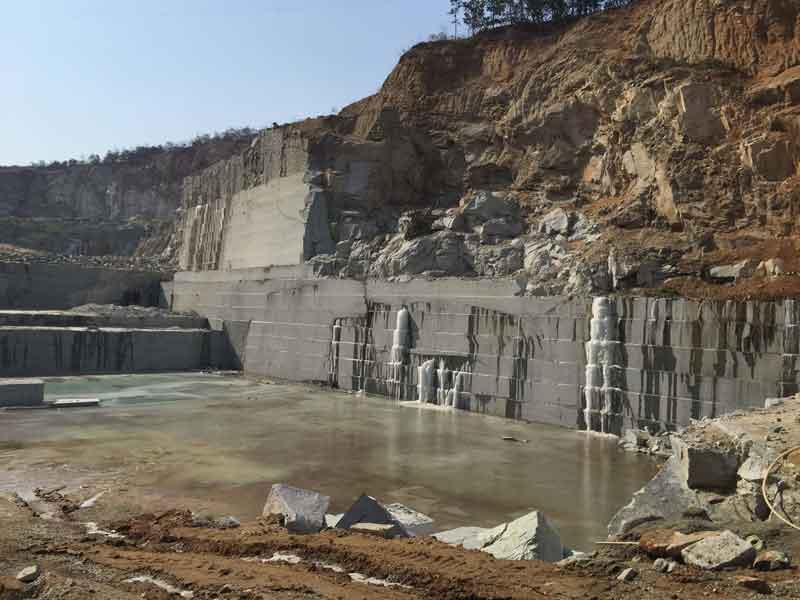A Journey Via Granite Quarries in South Africa: Unveiling Nature's Artistry
A Journey Via Granite Quarries in South Africa: Unveiling Nature's Artistry
Blog Article
Unveiling the Mysteries of Granite Quarrying: Where Strength and Style Meet
The globe of granite quarrying is a realm where the raw strength of nature assembles with human artistry to create frameworks that stand the examination of time with an air of style. From the depths of quarries to the thorough sprucing up in workshops, the process of transforming granite right into building marvels is a complicated dance of custom and innovation. As we peer into the midsts of this ancient craft, we start to discover the surprise details that form the very significance of our built setting.
The Beginnings of Granite Quarrying
In the record of architectural background, the beginnings of granite quarrying are shrouded in a tapestry of ancient craftsmanship and geological wonders. Going back to old Egypt and Mesopotamia, the removal of granite from quarries noted the beginning of a journey that would at some point result in the production of a few of the globe's most famous frameworks.
Granite quarrying's roots can be traced to the skilled craftsmens that acknowledged the stone's durability and visual appeal. With a combination of primitive devices and large resolution, these early quarry workers discovered granite blocks that would become the building blocks of worlds.
As civilizations developed, so did the methods of quarrying granite. The Romans, renowned for their design expertise, developed advanced techniques for extracting granite to build monuments, holy places, and roadways that stood the test of time.
The tradition of these ancient quarrying practices continues to shape contemporary architecture, with granite remaining an icon of toughness and beauty in building jobs around the globe. (granite quarries in south africa)
Devices of the Quarrying Profession
The evolution of granite quarrying methods from old people to modern times highlights the essential duty played by the devices of the quarrying profession in shaping the market's methods. In old times, quarrying devices were basic, usually consisting of blades, hammers, and wedges made from products like bronze or iron. These tools needed substantial workforce and time to remove granite blocks from quarries.

Additionally, the introduction of pneumatic tools and high-powered equipment has significantly minimized the physical labor needed in quarrying operations, boosting employee security and performance. As the quarrying market remains to introduce, the tools of the trade stay at the forefront of driving development and shaping the future of granite removal.
Drawing Out Blocks of Granite
Using precision machinery and advanced strategies, the removal of granite blocks from quarries has come to be a sophisticated procedure in the modern-day quarrying sector. The initial step includes recognizing the place and size of the granite deposit to identify one of the most reliable removal approach. As soon as an ideal website is chosen, the extraction procedure starts with the boring of openings for the positioning of dynamites. Regulated blowing up methods are then employed to break apart the granite into convenient sections.

Polishing and Completing Methods
To attain a remarkable surface on granite blocks, skilled craftsmens employ a collection of careful polishing and finishing techniques. After the preliminary extraction and forming processes, the granite article blocks go through a thorough polishing phase to enhance their natural charm and toughness. One usual technique utilized in brightening granite is ruby abrasion, where commercial rubies are made use of to grind and polish the rock to a smooth surface. This process not only develops a glossy surface but also ensures harmony in color and structure across the granite block.
In addition to polishing, finishing techniques are related to further refine the granite's appearance. These techniques might include flaming, refining, or brushing, each offering distinct structures and surfaces to fit different aesthetic preferences. Flaming, for circumstances, involves subjecting the granite surface area to heats to create a rough, distinctive finish, ideal for outdoor applications where slip-resistance is necessary. Honing, on the other hand, provides a matte finish that is smooth to the touch, perfect for indoor kitchen counters and floor covering. By thoroughly choosing and applying these polishing and finishing strategies, artisans can change raw granite blocks right into exquisite items that display both toughness and style.

Environmental Influence and Sustainability
With the growing emphasis on ecological consciousness in the industry, granite quarrying techniques are progressively looked at for their effect on all-natural resources and lasting sustainability. Quarrying for granite can have considerable ecological implications. The extraction procedure usually involves using hefty equipment, nitroglycerins, and large quantities of water, bring about environment devastation, dirt erosion, and water contamination. In addition, the transportation of granite from recommended you read quarries to refining facilities creates carbon exhausts, additionally adding to ecological destruction. granite quarries in south africa.
To mitigate these effects and ensure sustainability in granite quarrying, industry stakeholders are embracing various steps. Implementing advanced technologies to lower power consumption and water use, recovering quarried land for eco-friendly repair, and promoting responsible sourcing practices are some methods being utilized. Additionally, accreditations such as the Woodland Stewardship Council (FSC) and the Management in Power and Environmental Design (LEED) assistance consumers recognize eco pleasant granite items.
Conclusion
In verdict, granite quarrying is a process that requires specialized devices and techniques to remove blocks of granite and brighten them to a high level of surface. While the ecological impact of quarrying can be substantial, initiatives are being made to improve sustainability techniques in the sector. In general, granite quarrying is a delicate balance between using the strength and beauty of this all-natural stone while lessening its influence on the environment.
Report this page